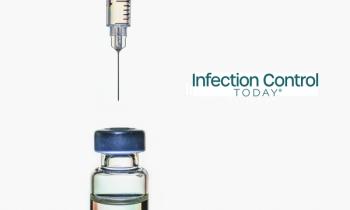
Measles in October 2025: Why Outbreaks Are Surging—And What Is Changing Now
Let’s make measles prevention visible. One quick huddle, one clear sign, one easy clinic—each move keeps families safe and confident.
Measles, once considered eliminated in the Americas, is again testing the world’s public-health defenses. As of October 1, 2025, the US reported
“The current measles outbreak is a reminder that public health advocacy is a continuous effort. Vaccines only work when people trust and use them. Our strongest defense lies in education, access, and accountability,”
The regional picture is sobering. The Pan American Health Organization (PAHO) warns the
“To think that the Americas could lose their measles-free status is devastating as it indicates the death of decades of public health promotion and research,” Isis Lamphier, MPH, MHA, CIC, AL-CIP, a member of ICT’s Editorial Advisory Board, told ICT. “The effect of decreasing MMR vaccination rates will reverberate and be felt by the Americas through increased illness, hospitalizations, complications, and deaths associated with a highly preventable disease for years to come.”
Earlier PAHO reporting quantified the surge, with 10,139 confirmed cases and 18 deaths across 10 countries by August 8, 2025—34 times higher than the same period in 2024—reflecting wide immunity gaps that opened during the pandemic and have not yet been fully closed.
Against this backdrop, US policy signals are shifting.
“2025 has seen the most measles cases since measles was declared eradicated in the U.S. in 2000,” Sharon Ward-Fore, the 2023 ICT Educator of the Year Award winner and a member of the ICT Editorial Advisory Board, told ICT. To no one's surprise, nearly all 2025 cases are in the unvaccinated or those whose vaccination status is unknown. The decline in vaccination rates has been years in the making. Yet, measles is a vaccine-preventable illness. Just an fyi- polio vaccination is also on the decline. Very worrisome!”
Several practical lessons stand out this autumn:
1) Undervaccinated pockets drive spread. US surveillance shows the overwhelming majority of patients are unvaccinated or of unknown status, a pattern mirrored in Europe and the Americas.
2) Speed matters as much as coverage.
3) Travel is a persistent spark.
4) Communication must rebuild trust. PAHO and US states highlight vaccine hesitancy and misinformation as barriers to recovering pre-pandemic coverage.
What Should Health Systems Do Now?
Audit coverage at the clinic, school, and county levels; prioritize outreach where 2-dose MMR is below 95%.
Stage rapid-response playbooks with same-day testing and isolation pathways; rehearse laboratory surge and weekend reporting.
Protect high-risk settings—Emergency departments, pediatric wards, shelters with signage, triage prompts, and immediate airborne precautions for rash-fever patients.
Engage communities through schools, faith groups, and local media; pair pop-up clinics with trusted messengers to overcome access and hesitancy barriers.
The October 2025 key message is clear but actionable: measles is taking advantage of areas with low immunity across the Americas and beyond, but the strategies to stop it, including timely detection and high, fair vaccination coverage, are well known. Whether the region stays measles-free will depend on how quickly countries turn that knowledge into vaccinations and prevent cases in the coming months.
Newsletter
Stay prepared and protected with Infection Control Today's newsletter, delivering essential updates, best practices, and expert insights for infection preventionists.






